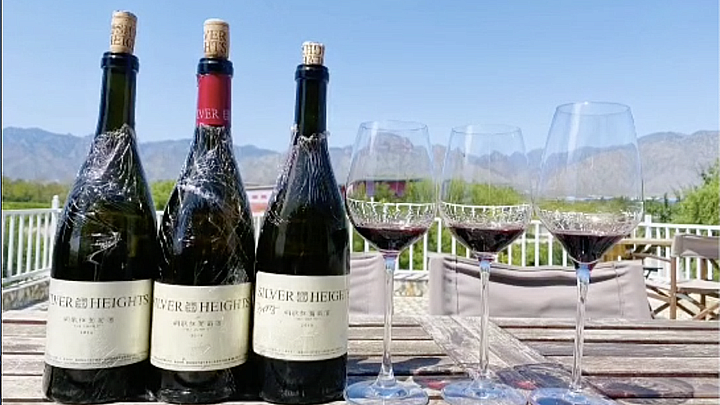During this year’s China National Day holiday, Tingting Wu went to visit a few vineyards in Yinchuan in the Ningxia Hui Autonomous Region, the location of some of the best wineries in China. A new region for the world map of wines, wine has been produced in the Helan Mountain Eastern Foothills for almost 4 decades. However it has only gained worldwide recognition over the last ten years as a result of winning awards in various top international wine competitions.
The vineyards lie on the eastern foothills of Helan Mountain. This is of particular importance to wine cultivation here, as the mountain ridge blocks the freezing winds that roll across the Tengger Desert. The Yellow River is also important, as it provides the irrigation necessary to cultivate the grapes in this otherwise arid location. This region receives over 3000 hours of sunshine per year, and the climate here is extremely dry, similar to the Mendoza region in Argentina. The diurnal range can reach 12-15 ºC, a critical factor for achieving fully ripe grapes while retaining their acidity. Despite unprecedented advances, some challenges remain. The freezing winters mean that vines must be buried every autumn after the harvest, a labour-intensive and costly process that results in the death of 3 to 5 percent of the vines each year.
Although wineries here plant various international grape varieties such as Cabernet Sauvignon, Merlot and Chardonnay, as yet there is no signature grape variety for Helan Mountain. This lack, however, may hopefully be filled in the near future by Marselan. Marselan is a cross of Cabernet Sauvignon and Grenache created in 1961 by Professor Paul Truel in the south of France. In creating Marselan, the hope was to blend the attractive qualities, including the structure, of Cabernet Sauvignon with the higher yields and heat resistance of Grenache. It produces big fruit bunches which guarantee high yields, has good resistance to disease, and small berries which provide more tannin and richer flavours. It was first introduced to China in 2001, and has been widely planted in many of China’s key wine regions, including Helan Mountain Eastern Foothills, southern Xinjiang and Huailai in Hebei Province. The beauty of Marselan lies in its unique varietal characteristics, complex flavours and rich palate as well as its potential to be used in producing different styles of wine.
We tasted a bottle of Marselan wine from a boutique winery named Silver Heights. It was a new wine which was still under development, and has not yet been released on the market. On the palate, the wine had ample fruit tempered by earthy undertones; the tannin was soft but perceptible; it had the creamy, fleshy texture of Grenache along with the complexity of Cabernet Sauvignon.


